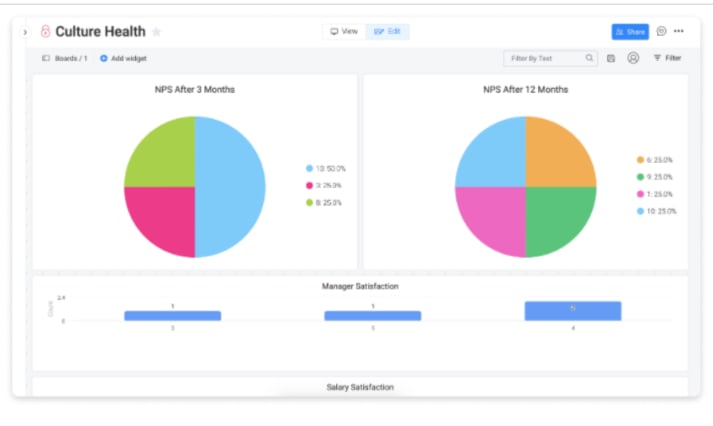Everything changes when you have successful team dynamics — groups that are in-sync and effective know that in order to solve problems quickly and garner mutual understanding must rely on open communication and the right tools to set them up for success.
In this blog, we’ve captured some key examples of positive team dynamics and what strategies your group members and team leaders can use to create an environment for accelerated team performance.
What is the meaning of team dynamics?
The term team dynamics sums up the often underlying psychological forces that can impact both individual team members and even an entire organization’s behavior and performance.
Many things can shape whether or not a team has positive group dynamics, like:
- Is there a perception of weak leadership?
- Do team members display excessive deference to authority?
- Is it clear to everyone what are the defined roles?
- Do team members feel that their peers and leadership pay attention and recognize their efforts?
- Does the C-suite encourage open dialogue?
Depending on the situation, any of these factors could be the impetus or the detriment to good group dynamics. Let’s compare positive vs. poor team dynamics.
Positive team dynamics can help improve the workflow of a project and push the entire team toward a common goal in a positive way.
Some signs that your team is showing positive team dynamics include:
- Respectful debates, even when people heavily disagree.
- Productive meetings where team members leave feeling invigorated and have a list of clear goals and takeaways.
- Team members show awareness of how their behaviors impact others.
- Team members understand that each role is an important cog in the project machine.
Conversely, poor or negative team dynamics can derail a project before it ever gets off the ground.
Some warning signs of poor team dynamics include:
- Poor communication, especially during disagreements.
- Team members walk out of meetings unsure of what was accomplished.
- Lack of accountability for personal performance and how that affects the team.
- Lack of respect toward other roles and the value they bring to the team.
4 strategies for successful team dynamics
Here are four essential steps for promoting good team dynamics.
Set clear expectations
Never assume your team will understand what’s expected of them when it’s not communicated effectively.If you want your team to interact in a certain way and adopt effective team dynamics, you need to be crystal clear on how to do it.
Here are some examples of mindsets you can ask your team to embody that contribute to effective team dynamics:
- Dignity and respect are non-negotiable amongst colleagues.
- Support is to be offered beyond your primary team to ensure effective collaboration for the whole organization.
- Always push to understand how your work impacts the team.
- Expect to receive and give feedback.
- Share knowledge with the team consistently — define how and when this should happen.
These are pretty general — the key to change or maintenance is having clear examples and resources that team members can follow or be measured against. An example of this in action could be to let someone finish sharing their idea before sharing yours. We also recommend that creating these expectations requires collaboration.
If you want people to work as a team, help them create the rules of engagement as a team.
Some questions to help you focus and brainstorm are:
- What are some basic courtesies everyone should abide by?
- How will you solve problems and make decisions as a team?
- How will you stay accountable to each other?
- How will you resolve conflicts and tackle tough conversations?
- What’s expected of leadership roles?
Provide a toolkit
Once everyone is clear on what’s expected of them, introduce some tools that encourage healthy debates and successful meetings.
Keep your kit simple by only choosing tools that bring value:
- A discussion template to facilitate healthy discussions and stay focused
- A ‘how to disagree’ template to prevent team conflict
- A meeting notes template to create more productive meetings
Put your money where your mouth is
Team effectiveness is as much about setting expectations as it is abiding by them. Ask yourself:
- How will you make sure the strategies you’re implementing become part of your team’s daily habits?
- Is every member of your team required to bring their discussion template to every meeting?
- Does a mediator need to be present during hard discussions?
- Do you have a policy in place in case a member of your team is struggling with another member?
Whatever you decide, make sure you have a plan in place to follow through.
For instance, you could use monday.com to create a ‘Priorities’ board, so the whole team stays on track.
![]()
Evaluate whether it’s working
Give your team time to put all of this into practice, and check if it’s working by asking for feedback. Standardizing this process as much as possible will save you time and give you the ability to make data-driven decisions, faster.
You can easily do this with core features on monday.com Work OS, like:
- Automations to send out important reminders and requests
- Forms to get anonymous feedback sent straight to your workspace
- Dashboard and chart widgets to make sense of the numbers

You can then use your data as a discussion point for your team to create an action plan for any problem areas you spot.
Do more for your effective team dynamic with monday.com
monday.com is a Work OS platform that can help you revolutionize your team dynamics. Using this digital workspace, you can create changes across the board, implement them, and gauge how effective they are.
For starters, you can use our team task list template to help your team track and view what everyone’s working on.

People can easily drop in updates, share progress, and easily request support from other team members.
You can also use our llama farm widget to boost team-building and camaraderie while sharing status updates in a fun way. The llamas represent the number of items on your board and are color-coded to reflect current statuses.

We also have hundreds of templates to help you create anything you need, including team surveys.

Plus, the chart widget can analyze all of your survey data.

Boost your team dynamics with the right framework
Respecting each other’s roles, trusting each other, helping each other improve, and supporting one another is a winning recipe for successful team dynamics.
Try monday.com Work OS to improve your team dynamics and watch how much more productive and happier your whole team can be.
